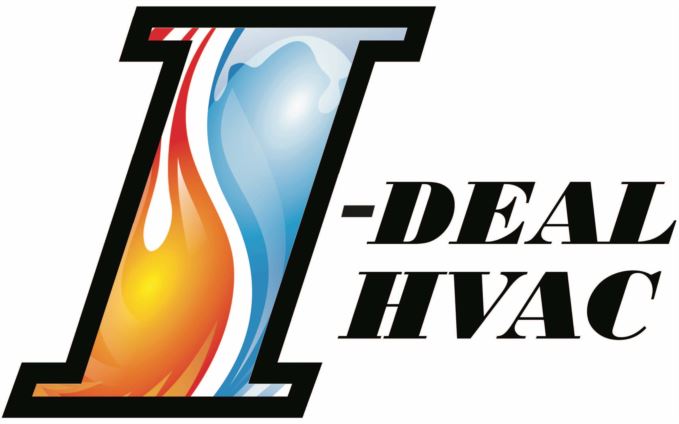
You shouldn’t need to sacrifice comfort or drain your wallet to keep your home at the right setting during warm days.
But what is the right temp, exactly? We review recommendations from energy specialists so you can find the best temperature for your house.
Here’s what we recommend for the most energy-efficient setting for air conditioning in Albuquerque.
Recommended Thermostat Settings for Summer
Most families find setting the thermostat at 72-73 degrees is ideal. However, if there’s a major difference between your interior and outside warmth, your cooling costs will be bigger.
These are our suggestions based on the U.S. Department of Energy (DOE) and ENERGY STAR®.
While at home: 78 degrees. While that sounds warm, there are ways you can keep your home refreshing without having the AC running frequently.
Keeping windows and window treatments closed during the day keeps cold air where it needs to be—inside. Some window treatments, like honeycomb shades or plantation shutters, are made to provide extra insulation and better energy savings.
If you have ceiling fans in your residence, the DOE says you can move thermostat temps about 4 degrees hotter without compromising comfort. That’s because they freshen with a windchill effect. As they cool people, not areas, turn them off when you leave a room.
If 78 degrees still appears too uncomfortable at first glance, try running a test for a week or so. Start by raising your setting to 78 degrees while you’re at your house. Then, steadily decrease it while following the suggestions above. You could be shocked at how comfortable you feel at a higher temperature setting.
While away: 88 degrees. There’s no reason to keep the AC working all day while your house is unoccupied. Switching the temperature 7–10 degrees hotter can save you an estimated 5–15% on your electricity expenses, according to the DOE.
When you arrive home, don’t be tempted to put your thermostat colder than 78 to cool your home more rapidly. This isn’t useful and typically produces a higher electrical cost.
A programmable thermostat is a useful approach to keep your settings under control, but you have to set programs. If you don’t set programs, you run the risk of forgetting to move the set temperature when you take off.
If you want a handy resolution, consider installing a smart thermostat. This thermostat connects with your phone, so it is aware when you’re at your residence and when you’re out. Then it automatically changes temperature settings for the biggest savings. How much exactly? Typically $180 yearly on heating and cooling, according to ENERGY STAR.
Another plus of using a smart thermostat? You can use your phone to monitor and regulate temperature settings from almost anywhere.
While sleeping: Around 70 degrees. While ENERGY STAR suggests 82 degrees, that could be too uncomfortable for most families. Most people sleep better when their sleeping space is cold, so that’s why the National Sleep Foundation advises 60–67 degrees. But that may be too cold, due to your pajama and blanket preference.
We suggest running a similar test over a week, putting your thermostat higher and gradually turning it down to find the right temp for your house. On mild nights, you might find keeping windows open at night and using a ceiling fan is a better solution than using the air conditioner.
More Methods to Use Less Energy During Hot Weather
There are additional ways you can spend less money on air conditioning bills throughout warm weather.
- Install an energy-efficient AC system. Central air conditioners only work for about 12–15 years and lose efficiency as they get older. An upgraded air conditioner can keep your home more comfortable while keeping AC expenses small.
- Schedule regular air conditioner tune-ups. Annual air conditioner maintenance keeps your system operating like it should and may help it run at greater efficiency. It can also help lengthen its life span, since it enables pros to pinpoint seemingly insignificant problems before they cause a major meltdown.
- Replace air filters often. Read manufacturer instructions for replacing your air filter. A dirty filter can cause your system to short cycle, or switch on and off too frequently, and increase your cooling.
- Inspect attic insulation levels. Almost 90% of houses in the United States don’t have adequate insulation, according to the Insulation Institute. The majority of southern climates need 13–14” of attic insulation, while northern climates should have 16–18”.
- Have your ductwork inspected. Ductwork that has come apart over time can leak conditioned air into your attic, walls or crawl space. This can lead to major comfort issues in your house, including hot and cold spots.
- Seal holes, doors and windows. Keep warm air where it should be by closing holes. You can also caulk or weather strip doors to keep more cool air within your home.
Conserve More Energy During Hot Weather with I-Deal HVAC
If you are looking to conserve more energy this summer, our I-Deal HVAC specialists can provide assistance. Reach us at 505-445-1250 or contact us online for extra details about our energy-saving cooling options.
